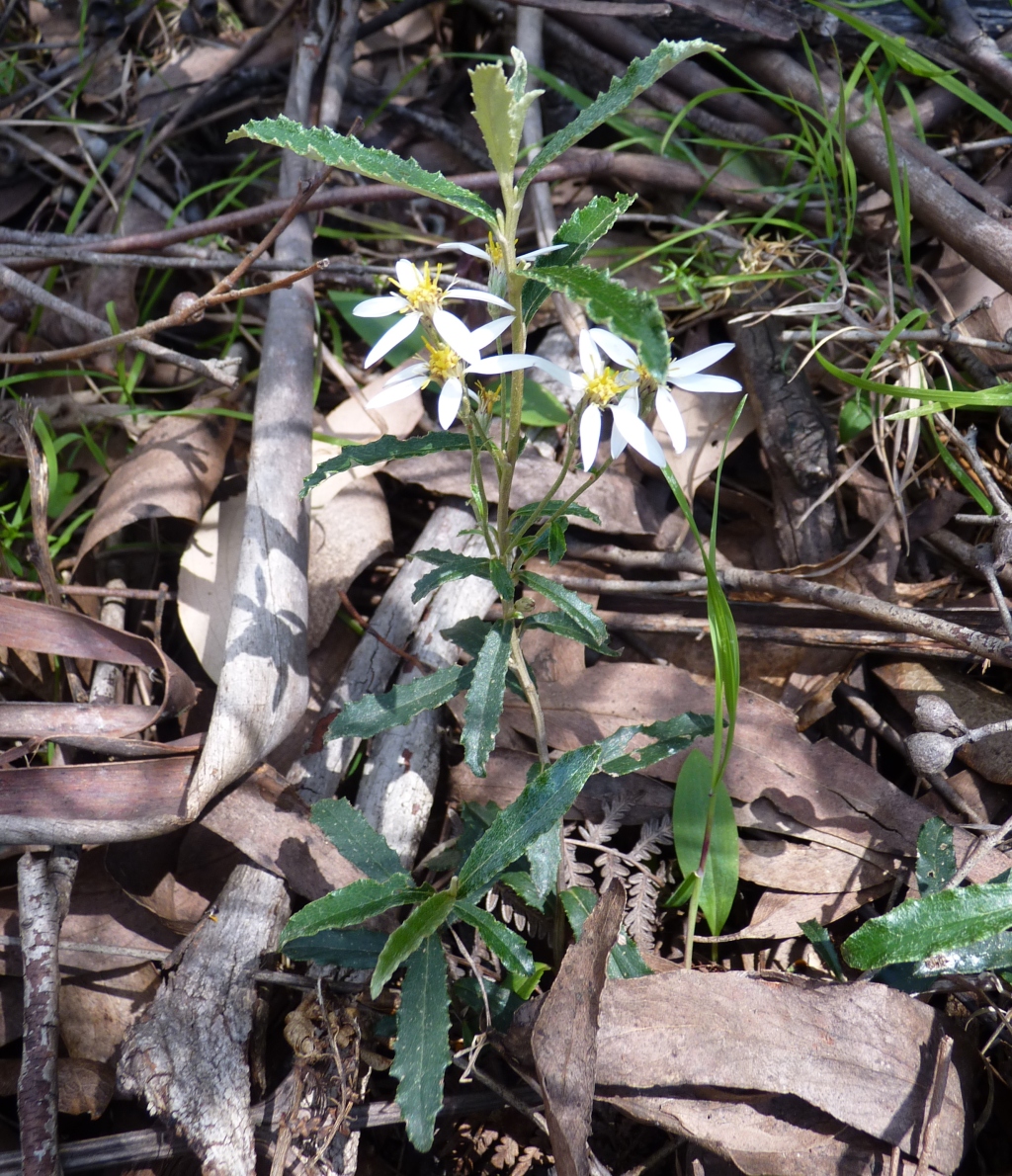Olearia erubescens
(DC.) Dippel Moth Daisy-bushSpreading shrub to 1(–2) m high; branchlets and leaf undersurfaces closely covered by whitish T-shaped hairs. Leaves alternate, subsessile, narrowly obovate to ovate, 12–55(–90) mm long, 3–15(–20) mm wide, stiff; upper surface glabrous, dark green, with prominent pale reticulate venation, lower surface white (often reddish when young); margin denticulate to biserrate, the teeth sharp-pointed; apex acute. Capitula 15–30 mm diam., on peduncles usually 1–4 cm long, terminal and axillary in leafy panicles; involucre conical, 4.5–7 mm long; bracts 3–5-seriate, graduating, sericeous. Ray florets 4–8, white, ligules 5–9 mm long; disc florets 7–13, yellow. Cypsela narrowly cylindric, 8-ribbed, 3–4 mm long, glabrous; pappus bristles straw-coloured or pinkish, 5–8 mm long. Flowers mostly Sep.–Dec.
Wim, GleP, VVP, VRiv, GipP, OtP, WaP, Gold, CVU, GGr, NIS, EGL, EGU, WPro, HSF, HNF, OtR, MonT, HFE, VAlp. Also SA, NSW, Tas. Widespread through foothill to montane forests and Eucalyptus pauciflora woodlands, often in rocky country.
Hybridizes with O. argophylla and O. megalophylla, and close to O. myrsinoides (see notes under those species). A form with unusually long (to 90 mm), very narrowly elliptic leaves has been collected from the far north-east on and near Pine Mountain.
Walsh, N.G.; Lander, N.S. (1999). Olearia. In: Walsh, N.G.; Entwisle, T.J., Flora of Victoria Vol. 4, Cornaceae to Asteraceae, pp. 886–912. Inkata Press, Melbourne.
 Spinning
Spinning

